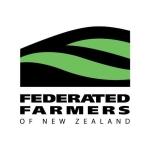Fonterra's Brazilian opportunity
Federated Farmers supports Fonterra Cooperative Group converting a cropping farm in Brazil’s Goiás State, into a pilot 850 hectare dairy farm. This farm will support Fonterra’s Dairy Partners Americas joint venture with Nestle, the world’s largest dairy company.
“Federated Farmers supports Fonterra investigating if in-country supplies of liquid milk are commercially viable,” says Lachlan McKenzie, Federated Farmers Dairy chairperson.
“Brazil is not just the world’s fifth largest country by land area, it happens to be the fifth largest country by population. These are solid reasons for Fonterra to build on its partnership with Nestle by creating its own local liquid milk supply.
“I don’t believe Fonterra is looking to become a corporate farmer. Instead, it is looking to stimulate quality local dairy production because its expertise is as a processor and exporter.
“The land suitable for pastoral agriculture in Brazil is around 90 million hectares. This is mostly the savannah grassland of its southern and central states, where Goiás is.
”While Brazil’s ‘pastoral sweetspot’ is around eight times larger than our pastoral area, a much smaller area is suitable for dairy production.
“Creating in-country supplies of liquid milk in China and now Brazil, may create spin-off businesses. With Fonterra also conducting a business case study on India, the world’s second largest liquid milk market, we can see the potential.
“To ensure the integrity of the Fonterra brand, Federated Farmers would prefer to see these pilot farms branded away from Fonterra. This would be wholly consistent with its Australasian milk supply.
“Federated Farmers will be working on behalf of our members, to verify if there is strategic value to shareholders before anything moves beyond the pilot stage.
“But, should these pilot farms be successful, they do have the potential to build shareholder value. Since Fonterra is New Zealand owned and controlled, this could benefit all New Zealanders.
“There is also another aspect to this and that’s potentially reducing Fonterra’s dependency on New Zealand liquid milk. While Fonterra is the world’s largest dairy exporter, 69 percent of its current supply comes from New Zealand farms.
“It seems prudent for Fonterra to reduce its New Zealand exposure should the unforeseen happen. That could be a natural disaster, animal disease or even, as a result of public policy,” Mr McKenzie concluded.
